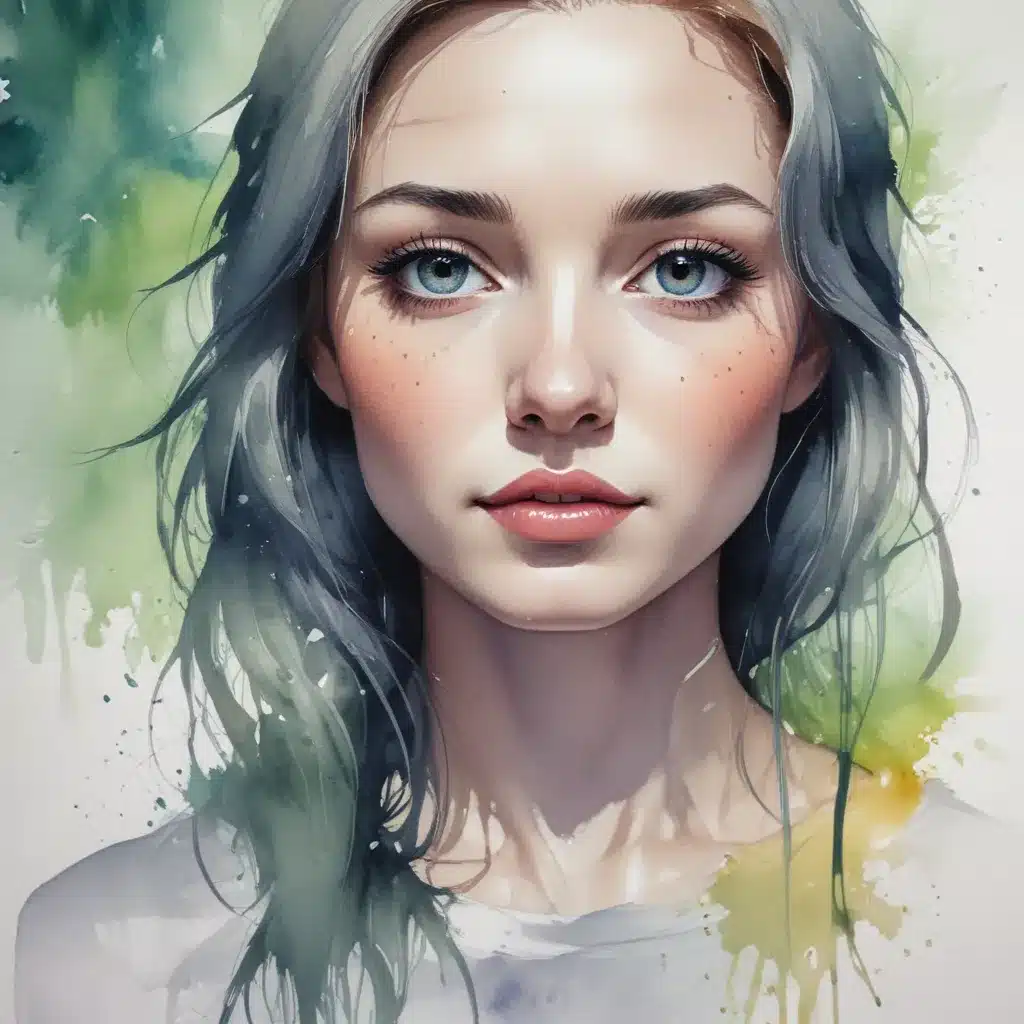
Watercolour painting offers a profound sense of freedom and spontaneity, allowing artists to embrace the unpredictable nature of this captivating medium. In our 15 years installing… By exploring experimental watercolour techniques, you can unlock a world of creative possibilities and infuse your artworks with a dynamic, expressive quality.
Now, this might seem counterintuitive…
Wet-on-Wet Technique
One of the most liberating watercolour techniques is the wet-on-wet approach. Also known as the “alla prima” method, this technique involves applying pigment to a pre-dampened surface, enabling the paint to bleed, blend, and create organic, unexpected patterns.
To begin, thoroughly wet your paper with clean water, either using a large brush or spraying it lightly. Then, load your brush with vibrant watercolour paint and begin applying strokes directly onto the damp surface. The wet paper will allow the paint to spread and intermingle, creating soft, hazy edges and mesmerizing colour combinations.
The beauty of the wet-on-wet technique lies in its unpredictability. As the paint dances across the surface, it will react in unique ways, forming intricate patterns, blooms, and textural effects. Embrace these happy accidents and let the medium guide your creative process. Experiment with different pigment concentrations, brush techniques, and water ratios to achieve a wide range of results.
Dry Brush Technique
In contrast to the fluid, spontaneous nature of wet-on-wet, the dry brush technique offers a more controlled and textural approach to watercolour painting. This method involves using a stiff, almost dry brush to apply concentrated paint directly onto the paper, creating crisp, defined strokes and a sense of movement.
Start by loading your brush with a relatively thick, creamy paint consistency. Gently dab the excess paint onto a paper towel or rag, leaving just enough pigment to create distinct, expressive brushstrokes. Then, apply the paint to your dry paper surface, using a variety of brushwork techniques such as stippling, scumbling, or dragging the brush across the paper.
The dry brush method allows you to maintain a high degree of control over the paint, enabling you to create sharp, gestural lines, dynamic textures, and a sense of energy within your watercolour paintings. This technique is particularly effective for capturing the essence of a subject, whether it’s a rugged landscape, an urban scene, or a bold, abstract composition.
Experiment with different brush types, from stiff bristle brushes to soft, round brushes, to achieve a range of dry brush effects. You can also try mixing mediums, such as adding a touch of gouache or acrylic to your watercolours, to further enhance the textural qualities of your dry brush applications.
Exploring Mixed Media
Watercolour painting can be seamlessly integrated with other media, allowing you to create rich, multi-layered artworks that push the boundaries of traditional watercolour techniques. By incorporating elements like pencil, ink, pastel, or collage, you can unlock a world of creative possibilities and imbue your paintings with a unique, expressive quality.
One effective approach is to use pencil sketching as a foundation for your watercolour work. Begin by lightly sketching the composition with a pencil, capturing the essential shapes, forms, and gesture of your subject. Then, gradually build up layers of transparent watercolour washes, allowing the underlying pencil drawing to emerge and add depth and nuance to your painting.
Another intriguing technique is to combine ink washes with watercolour. Start by applying free-flowing, spontaneous ink splatters or washes onto your paper, creating a bold, abstract foundation. Once the ink has dried, respond to the organic marks by adding watercolour paint, allowing the two mediums to interact and create a harmonious, visually striking composition.
Experimenting with mixed media techniques can also open up new avenues for textural exploration. Try incorporating collage elements, such as torn paper or fabric scraps, or applying pastel or acrylic accents to your watercolour paintings. The interplay of these varied materials can result in captivating, multidimensional artworks that defy traditional watercolour conventions.
Embracing the Creative Process
The true essence of experimental watercolour painting lies in the act of embracing the creative process itself. Watercolour is a medium that thrives on spontaneity, chance, and the unexpected, inviting artists to let go of preconceived notions and surrender to the flow of the paint.
To fully unlock the potential of experimental watercolour techniques, it’s crucial to approach your creative practice with a spirit of playfulness and curiosity. Resist the temptation to obsess over perfection and instead, allow yourself to explore, experiment, and discover new possibilities with each brushstroke.
Adopt an intuitive, improvisational mindset, allowing the paint to guide your decision-making process. Embrace the element of surprise, and be open to the happy accidents that may arise, as these unexpected moments often lead to the most compelling and unique artistic expressions.
Remember, there are no mistakes in watercolour painting – only opportunities for growth and discovery. Treat each painting session as a journey of exploration, where you can push the boundaries of the medium, experiment with new techniques, and unleash the full potential of your creative voice.
By immersing yourself in the process, you’ll not only develop a deeper understanding of watercolour painting but also cultivate a more intuitive, expressive, and authentic artistic practice. Embrace the freedom that experimental watercolour techniques offer, and let your creativity soar to new, uncharted heights.
Practical Tutorials and Resources
To further inspire your watercolour explorations, visit Pencil and Paint Muse for a wealth of practical tutorials, creative insights, and inspiring artworks. Discover step-by-step guides on wet-on-wet techniques, dry brush applications, and innovative mixed media approaches. Explore the vibrant gallery of watercolour paintings that showcase the limitless possibilities of this captivating medium.
Dive into the world of experimental watercolour painting, and let your artistic expression flow with spontaneity, energy, and a boundless sense of creative freedom.
Example: Modern Abstract Painting Series 2024